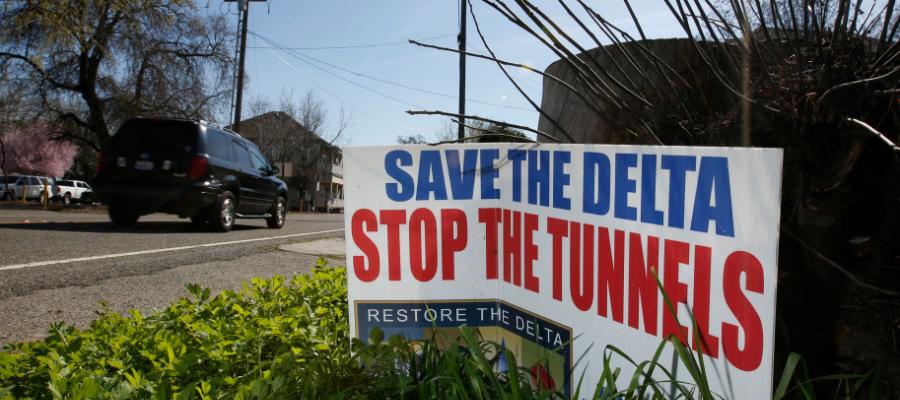September 8, 2017

The League of Women Voters of California opposes the WaterFix—twin tunnels the Department of Water Resources proposes to bore under the Sacramento-San Joaquin Delta to move water for urban and agricultural uses in other regions.
Better options exist to address California’s water needs. The Santa Clara Valley has the innovative capacity to develop those options.
The Pacific Institute and the Natural Resources Defense Council have shown that although Californians annually use at least 6 million acre feet more water than the state’s rivers and aquifers can sustainably provide, water-saving practices could save up to 14 million acre feet each year. Water conservation, wastewater reclamation and stormwater capture—long-standing solutions supported by the League—are alternatives to the twin tunnels and form the viable Plan B to create a more reliable water supply than the tunnels for Santa Clara County.
Water recycling alone could meet a large percentage of Santa Clara Valley’s water needs. Santa Clara Valley imports about 170,000 acre feet per year from the Delta while discharging about 200,000 acre feet of wastewater to the Bay. The Orange County Water District already recycles over 100,000 acre feet of wastewater annually, but the Santa Clara Valley Water District looks to recycle only 30,000 by 2035.
Clearly, there is room for improvement here.
Stormwater capture is another source of water that could be developed statewide. Los Angeles, which gets about the same precipitation as San Jose, projects possible stormwater capture from 170,000 to 250,000 acre feet per year by 2099. At that rate, stormwater capture alone could cover the 170,000 acre feet that Santa Clara Valley imports from water projects through the Delta.
Unfortunately, conservation alternatives did not receive sufficient study during the environmental review phase of the WaterFix, which has, from the beginning, focused on large-scale infrastructure as the solution to California’s water challenges.
Repair of existing infrastructure, such as damaged dams and sinking water transfer aqueducts, will already require billions of dollars. WaterFix tunnels will only add billions in construction and interest costs, without adding more certainty or water to our future.
Looking to the Delta for more water by any delivery system is unwise. The health of the Delta environment has been damaged by over-large amounts of water taken for years. Delta exports have been limited in the past due to regulatory restrictions; the same environmental concerns will reduce available amounts in the future.
Flows to repel salinity moving upstream from the ocean protect water quality for exports and for the health of the Bay-Delta Estuary. These flows will be harmed by WaterFix proposals to withdraw water before it even reaches the Delta.
Fortunately, an April 2017 survey by EMC Research demonstrated the willingness of a majority of Santa Clara Valley voters to pay for recycled water and stormwater capture. These same voters were much less willing to invest in storage and conveyance improvements to maintain the level of imported water from the Delta.
Similarly, a 2015 Bay Area Council poll found 88 percent of Bay Area residents favored expanding recycled water programs.
Regional water security through projects involving local, sustainable and reliable alternatives would create local jobs. The approximately $16 billion baseline cost of the WaterFix, plus tens of billions in interest, could instead fund a range of job-creating projects that would benefit residents, businesses, and farms.
It could fund regional investments that would help buffer against sea level rise, maintain infrastructure, and increase drought resilience.
Twentieth century engineering projects like the WaterFix cannot protect Santa Clara Valley water supplies. We need to turn instead to 21st century innovation, at which the Santa Clara Valley excels and on which California’s water future depends.
